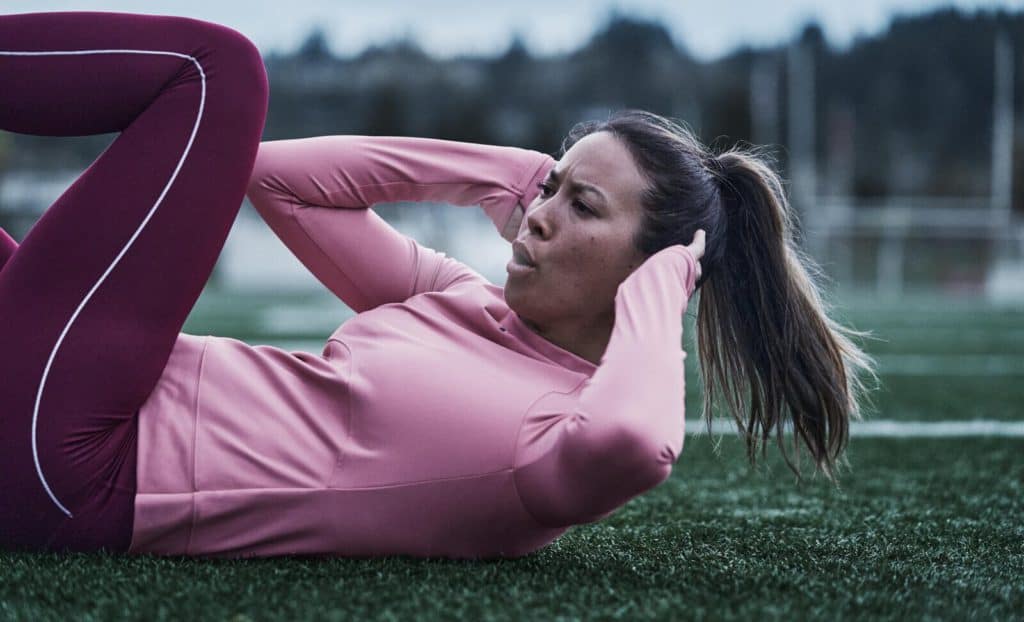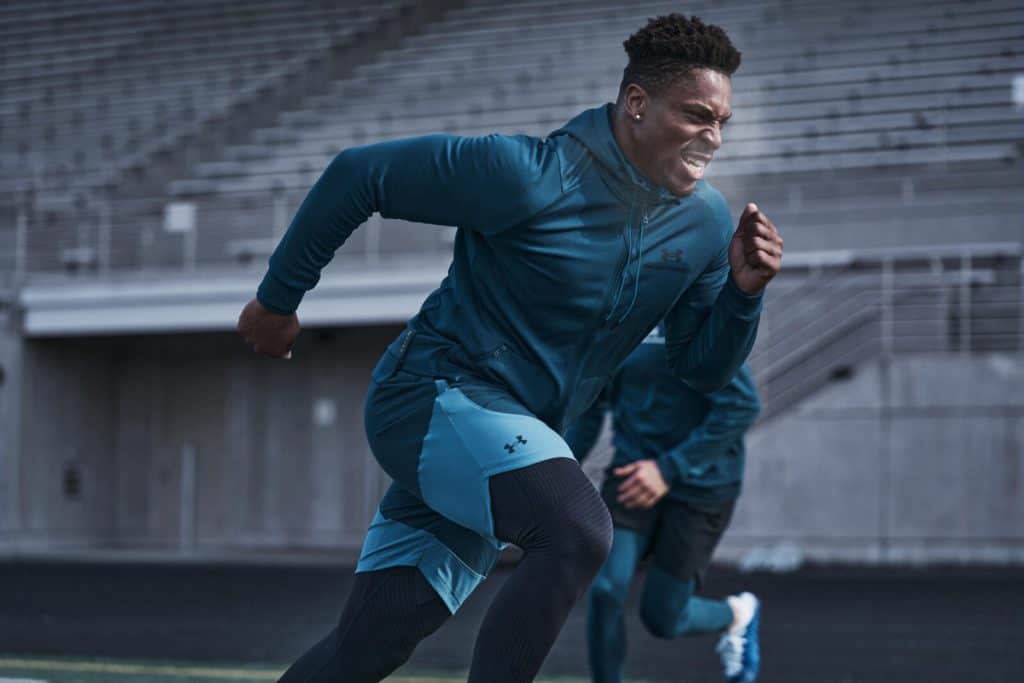Overview
It is typical for skiers, hockey players, snowboarders, and winter-sport endurance players to be in the cold most of the time. But if you are not a winter-sport athlete, do you know that working out in the freezing temperature outdoors can also benefit you? Winter training helps you endure the cold months between November and April.

Benefits of Cold Weather Training
Working out in the cold increases the blood flow and circulation to all the nerves and veins as the body has to work and ignite its internal radiator. It also improves the chances of a better workout and strengthens the cardiovascular system because the cold weather pushes your body to work harder during training. Cold training also increases mental strength and endurance, plus you get to commune with and enjoy nature. The body’s immune system is tested upon the cold and therefore has to adjust and improve itself. It also improves the mind by boosting the mood when it’s darker or cloudier in winter. It is so tempting to stay at home and manage to do indoor exercise when the temperature drops. But if you have higher and long-term fitness goals, training in the cold will challenge your body to push harder so you can gain more. There is a misconception that you burn more calories when you exercise on a hot day. You actually burn more calories in the cold because your body utilizes more energy to produce heat. You are also less likely to become dehydrated because you sweat less on a cold day.

What to Consider?
No matter how healthy or well-prepared you are, you can still fall into danger if you’re out in the cold for an extended period. Hikers, snowboarders, skiers, and long-distance runners are prone to this because they’re usually outside for hours. To avoid this, there are also several factors that you should consider when you workout during winter.
1. Check the ForecastIf the temperature is below zero, the wind chill is severe, or if it’s raining or snowing, training outside can be dangerous. It is crucial to know the weather condition and make the appropriate plan and necessary steps for your outdoor training.
2. Dress in LayersThe idea of dressing in layers is so you can remove layers as you warm up. If you are dressed too warmly, you are most likely to overheat, or if you get wet and moisture permeates your clothing, you may not be able to keep your core body temperature up. “The layer closest to your skin should be a moisture-wicking material, like lightweight polyester or polypropylene, to take moisture away from your skin to the outer layers to evaporate,” says orthopedic surgeon Dominic King, DO. The second layer is the insulating layer, which should be wool or polyester fleece. The outer layer needs to be wind and rain-repellent. “When exercising in the cold, King says, this third layer should be removed unless it is raining, snowing, or very windy.”
3. Take Time to Warm-upWarm-up is necessary even if you are not going to train in the cold weather, but more importantly so during this time of the year as your joints may be stiffer when it is cold.
4. Pay Attention to your Hands, Feet, and HeadBlood flows to your core when you are involved in a heart-pumping workout, making your fingers, toes, and head vulnerable to the cold. Make sure to bring a hat, gloves and warm socks and if it is freezing, wear a scarf.
5. Stay HydratedThough you are less likely to be dehydrated during winter, it is still necessary to bring liquid to your training and hydrate before, during, and after exercise.
6. Stay Moving, Stay LooseTo keep warm, you might tend to stay tight and snug during cold temperatures, but it is necessary that your blood can circulate through your outdoor training. You can do arm rotation or wiggle your toes, shake your hands, or open and close your fists to avoid injury and keep your body running in good condition.
7. Protect your SkinCold weather makes your skin dry, and even when the sun is hiding from the clouds, your skin is still prone to skin damage because of the UV rays. It is necessary to wear moisturizing lotion and sunscreen to protect your skin from drying and skin damage or sunburn. Consider also covering your face with a running mask or a scarf.
8. Take a vitamin D supplementTo boost your immune system during winter training, consider taking a vitamin D supplement. “Making sure you have sufficient vitamin D can enhance your bone health, boost your immune system and keep your hormones in balance,” Dr. Ramse Shehab says, a sports medicine specialist at Henry Ford Health System.
9. Know the Signs of Frostbite and HypothermiaTingling, blistering, numbness, or discoloration of the skin are all evidential symptoms of frostbite. If that happens, go indoors as soon as possible and run your skin under warm — not hot — water to get it back to temperature. Avoid also rubbing or walking on the affected areas, as that can create more harm. Hypothermia is another cold-weather threat. Hypothermia can cause confusion, sleepiness, and mumbled speech, and poor coordination. Hypothermia can be deadly, so if you experience these symptoms while training in cold temperatures, remove any wet clothing and warm the person up with something like an electric blanket or someone else’s body heat.

Objectives of Winter Training
Winter training is your preparation for spring events, and as you aspire to be in good racing shape, here are three different objectives to aim for:
1. Developing General FitnessWinter training should feature a mix of easy runs, long runs, and faster runs at every intensity from marathon pace to full sprints and a little hill work to increase your stride power. While some runs should be more difficult than others, none of the runs you do throughout this period should be more than reasonably challenging. An excellent peak workout to do before a 10K race is 6×1 mile at a 10K race pace with 1-minute passive recoveries between efforts. A more appropriate training targeting the same intensity during the winter would be 6×1 km at a 10K pace.
2. Increasing DurabilityTo increase your durability, you must also increase the work you are putting into your workout. This means taking some risks and challenging your limits without hurting yourself. One of the significant objectives of winter training is to lessen the possibility that you get injured or burn out later by improving your body’s durability. The most sensible way to do this is to slowly build your running volume until it attains a level that is at or close to the highest level that is generally sustainable for you. Increase gradually up to around 40 miles per week during the winter if you intend to peak at 50 miles per week right before your next race. Through strength training and mobility work, you can also improve your injury resistance. If you prioritize them in winter, your body will be more balanced before you begin piling on the miles.
3. Improving Body CompositionBefore starting a race-focused training cycle, the best time to prioritize dropping excess body fat is during the off-season. When you are getting training workloads close to your limit, make sure you are eating enough to boost performance and recovery. You can’t race your best if you are not lean and strong. Strength training develops a leaner body composition by boosting resting metabolism. The best kinds of activities to utilize for this purpose are compound movements, including large muscle groups and completed with heavy loads. Deadlifts and back squats are examples of these movements.
Ways to Make the Most of Winter Training
It takes determination and self-discipline to overcome idleness during cold weather. But if they seem to be not enough, consider these tips on how to enjoy and benefit from winter training:
1. Embrace a winter runRunning in the snow is like running in the sand, which according to a recent study in the Journal of Strength and Conditioning Research, is a form of natural resistance. It leads to a higher heart rate and perceived level of exertion without affecting recovery. Bring a friend with you or run your dog with you to add fun to your winter run.
2. Focus on your Personal RecordRecord your numbers at the start of winter and gradually put the intensity, decrease the rest time and go harder. This helps you identify what works best for you.
3. Cross-country skiSkiing provides a total body workout. The simultaneous pulling and pushing make it an upper and lower body workout and burn 400 to 500 calories per hour at a slow pace.
4. SkateIt is not every day that you can do ice skating so take advantage of it. It is a great low-impact workout that hits the core, legs, and butt. It also works your endurance, balance, muscle tone, coordination, and flexibility and burns 250 to 810 calories per hour.
Conclusion
Cold weather or winter training has challenges and risks, but with these tips and information, you will not only survive winter training, but you’ll also enjoy it. Just be prepared and be sensible, and you’ll appreciate and revel in the cold weather training. Don’t forget to bring a friend or a family member with you — they add to the fun!

1. https://thebodycamp.com/16-benefits-training-winter-months/
2. https://www.henryford.com/blog/2021/01/6-tips-for-the-best-cold-weather-workout
3. https://health.clevelandclinic.org/how-to-stay-active-outside-when-the-weather-gets-colder/
4. https://www.everydayhealth.com/healthy-living/fitness/easy-winter-exercise-tips-help-you-stay-fit/
5. https://rightasrain.uwmedicine.org/body/exercise/cold-weather-fitness-tips
6. https://www.alterg.com/treadmill-training-rehab/athletics/athletic-training/cold-weather-training-pointers
7. https://www.8020endurance.com/how-to-train-and-eat-during-the-winter/
8. https://www.trainingpeaks.com/blog/4-key-components-of-winter-training/
9. https://www.active.com/fitness/articles/8-ways-to-make-the-most-of-winter-training

Tim is the founder of FitAtMidlife.com – an avid gym rat for 30+ years, he’s a reviewer of many, many shoes – and founder of the Speed Bag Gathering – the world’s only gathering of speed bag punching enthusiasts. See more gym reviews at Tim’s YouTube channel.
